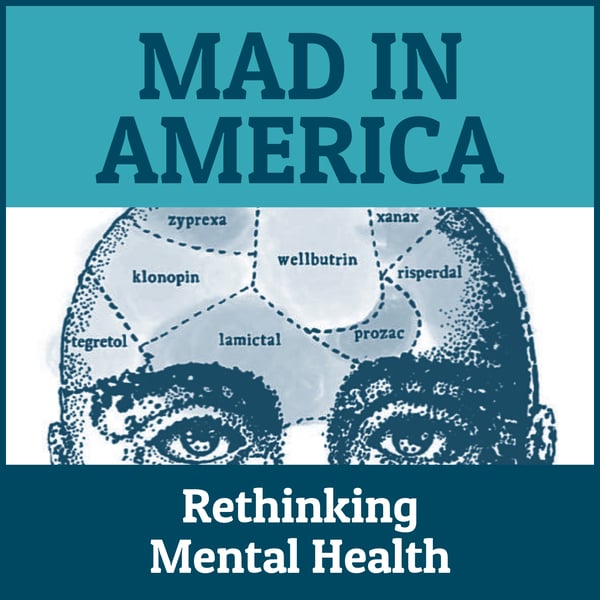Robert Whitaker Answers Reader Questions on Pharma Marketing and Psychiatric Drugs
Mad in America: Rethinking Mental Health
Mad in America
4.8 • 201 Ratings
🗓️ 20 December 2023
⏱️ 41 minutes
🧾️ Download transcript
Summary
On the Mad in America podcast this week, we continue our reader Q&A with Mad in America founder Robert Whitaker. In Part 1, we discussed Mad in America, the biopsychosocial model and the history of psychiatry. For Part 2, we will be covering reader questions on pharmaceutical marketing and issues with psychiatric treatments including psychiatric drugs and electroconvulsive therapy. Thank you to all of you who took the time and trouble to send in your questions.
***
Thank you for being with us to listen to the podcast and read our articles this year. MIA is funded entirely by reader donations. If you value MIA, please help us continue to survive and grow.
To find the Mad in America podcast on your preferred podcast player, click here
Transcript
Click on a timestamp to play from that location
| 0:00.0 | Welcome to the Madden America podcast, your source for science, psychiatry and social justice. |
| 0:15.3 | Hello, this is James, and welcome to the podcast. And this week, we continue our reader Q&A with Madden America founder Robert Whitaker. |
| 0:23.6 | In part one, we discussed Mad in America, the Biosyco-Social model, and the history of psychiatry. |
| 0:30.6 | For part two, we'll be covering reader questions on pharmaceutical marketing and issues with psychiatric treatments, including psychiatric drugs |
| 0:39.3 | and electroconvulsive therapy. Thank you to all of you who took the time and trouble to get in touch. |
| 0:45.2 | You sent some great questions, and if you haven't already, please do listen to part one of this |
| 0:50.3 | Q&A, which you can find by visiting maddenamerica.com, or it will be on your preferred |
| 0:56.2 | podcast player. And before we get to hear from Bob, this is our last podcast episode of 2023. |
| 1:03.2 | So thank you so much for being with us and for taking the time to listen. I hope that you'll |
| 1:08.3 | continue to follow the podcast in 2024. |
| 1:12.4 | Okay, we're going to move on to some questions now that look more at perhaps the history |
| 1:16.6 | of psychiatry and perhaps more related to your first book on this, Madden, America, |
| 1:21.6 | rather than anatomy of an epidemic. So Mary has sent in some questions, and her first is, |
| 1:45.8 | in the past, there were other tools used to at least try to help folks in crisis. Has anyone investigated how alternative therapies were diminished and basically vanquished? Was it related to medical insurance or government programs? It was related to 1980, the third edition of the Diagnostic and Statistical Men. So if you go before 1980, if you go in DSM 1 and DSM2, those books are actually |
| 1:53.3 | tell that psychiatric disorders, difficulties, often are reactions to difficulties in the |
| 1:58.4 | environment, say to the stresses in the family. Now, there was always |
| 2:02.6 | seen as a core group of biological disorders, but that was a small group. So that's, that was |
| 2:08.8 | the understanding in the 70s that in fact, social things did count. Then what happened in the 1970s is |
| 2:16.1 | psychiatry as a profession said we're under siege our future |
| 2:21.0 | our survival is threatened why is it threatened because there is an anti-psychiatry movement saying |
| 2:25.3 | we function more as a means of social control than as medical doctors benzodiazepines their most |
| 2:31.7 | famous drugs most popular drugs were being seen as addictive and harmful. |
... |
Please login to see the full transcript.
Disclaimer: The podcast and artwork embedded on this page are from Mad in America, and are the property of its owner and not affiliated with or endorsed by Tapesearch.
Generated transcripts are the property of Mad in America and are distributed freely under the Fair Use doctrine. Transcripts generated by Tapesearch are not guaranteed to be accurate.
Copyright © Tapesearch 2025.

